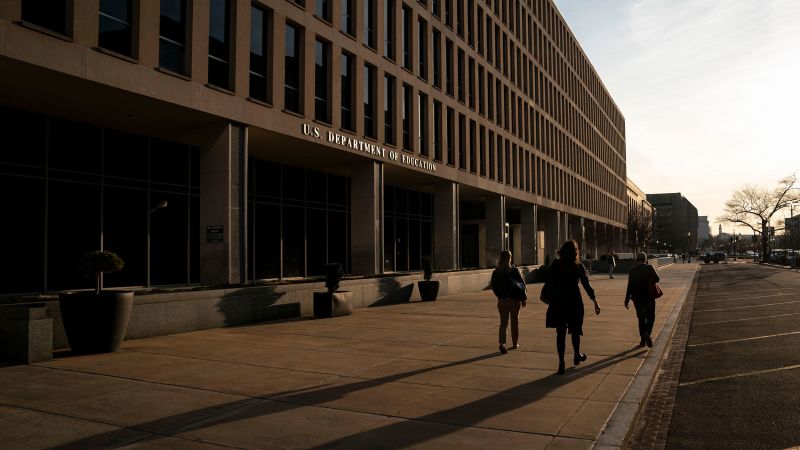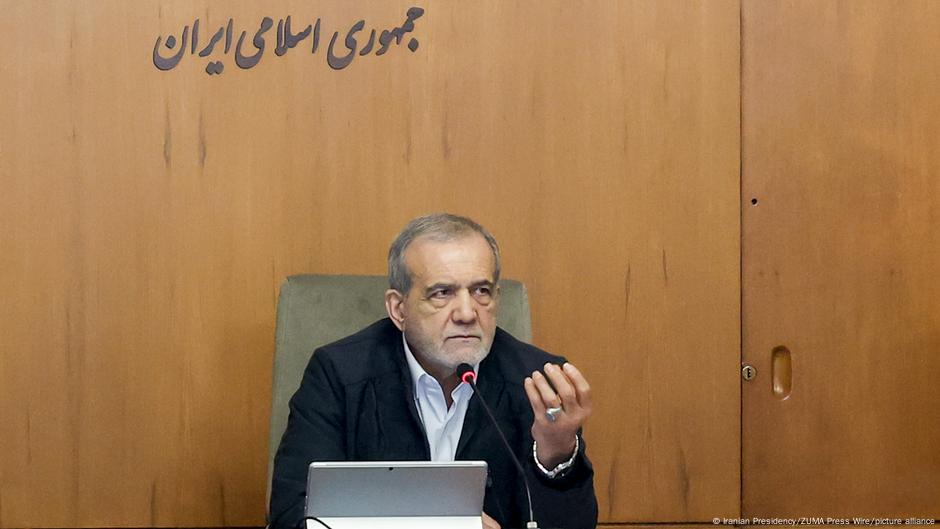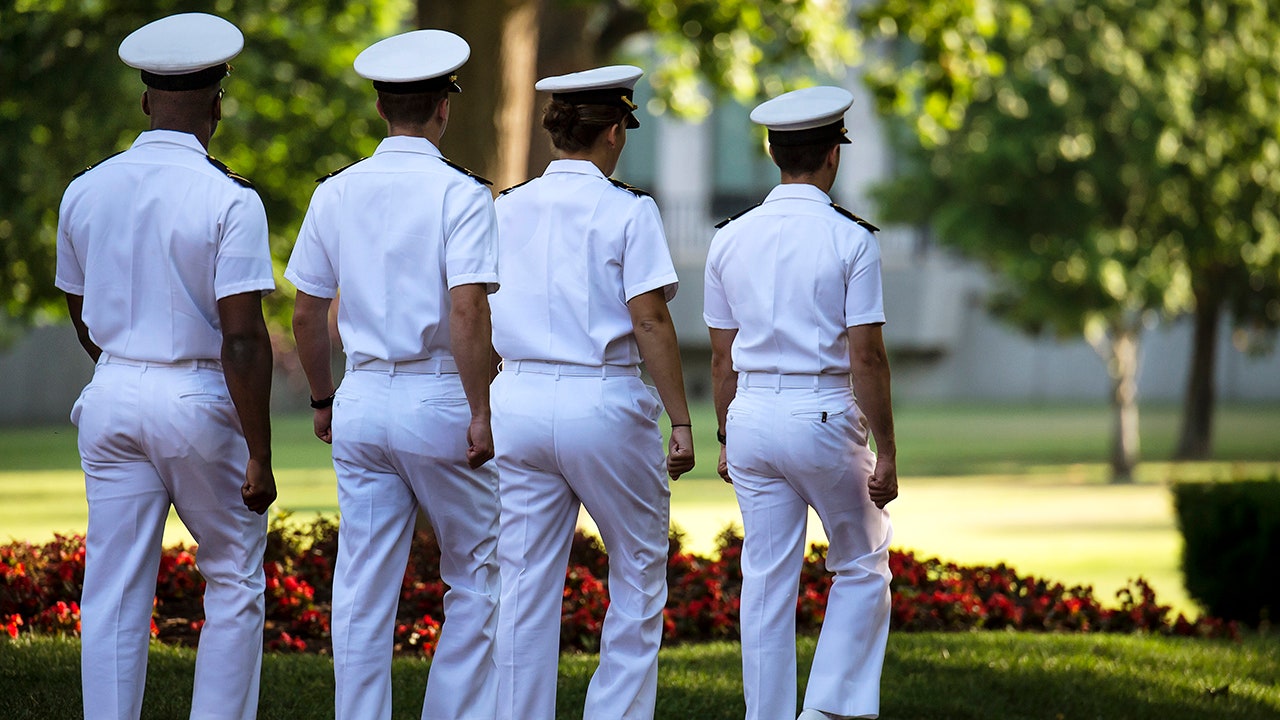Alaska
Alaska sportfishing professionals share input as fishing season kicks off
/cloudfront-us-east-1.images.arcpublishing.com/gray/4UKP2DTVJJH45GXSG3UI5OAJ4Q.jpg)
ANCHORAGE, Alaska (KTUU) – The first salmon runs begin this weekend, and many anglers are excited to get out with their rod and reel for some fishing.
But with many emergency closures and restrictions to king salmon fisheries this summer, it’s important to check regulations before going out.
“Determine where you’re fishing and go to Fish and Game or go to a local office and find out what’s available during the timeframe that you’re going to be fishing,” Kenai River Sportfishing Association Executive Director Shannon Martin said.
Even with these closures, there is still plenty of opportunity for anglers to get their fishing fix this summer with sockeye salmon arriving in mid-July, and silver salmon at the end of July through August.
“The outlook is great. We don’t really have a lot of changes from the way the fisheries have been in the last decade,” fishing guide Mark Glassmaker said. “We really only fish kings on the Kasilof anymore and that’s in this early run and that peaks right now until about the 10th of June and then we largely transition into sockeye fisheries and those all look robust and healthy for this coming year so we’re looking forward to it,”
Besides salmon, there are still plenty more options for fishing if the runs turn out to be lackluster, such as pike fishing and rainbow trout fishing.
“So there’s always something to catch, whether you can keep them or not,” Northwoods Lodge operator Shan Johnson said. “A lot of people are just into the sport of fishing so it’s not important or imperative that they take fish home.”
Glassmaker also recommends that if you are looking to fish with a guide, it’s best to schedule early and have an open mind about location — that gives your guide more options for going to the best fishing sites.
“If you’re fishing on your own, there’s a lot of helpful resources out there. I mean, obviously the internet, social media posts, definitely the sonar counts from the Kenai are a good thing to watch,” Glassmaker said.
Area regulations can be checked on the Alaska Department of Fish and Game’s website or by asking your regional office.
Copyright 2023 KTUU. All rights reserved.

Alaska
WNBA’s Alissa Pili and Olympic medalist Kerry Weiland highlight Alaska High School Hall of Fame Class of 2025 – Anchorage Daily News

The Alaska School Activities Association announced the Class of 2025 of the Alaska High School Hall of Fame on Friday. Among the dozen individuals who will be inducted are former Dimond multisport star and current professional athlete Alissa Pili and Palmer women’s hockey trailblazer Kerry Weiland.
The ceremony honoring the class is at 2 p.m. April 27 at the Special Olympics Alaska Jim Balamaci Training Center in Anchorage.
The Hall was established to recognize and permanently honor individuals who displayed “high ethical standards and integrity while achieving excellence in high school athletics and activities,” according to ASAA. It also recognizes those who have made “exemplary contributions” to the prep sports and activities landscape on the Last Frontier.
Categories include students who participated in athletics, academic activities and fine arts, as well as contributors who served as coaches, advisers, directors, administrators, officials and adjudicators. Any former student must have graduated at least five years ago to be eligible for induction. This year’s class marks the 20th in the hall’s history and features 10 athletes and two activities teachers/coaches.

Athlete inductees
Pili racked up a staggering 13 state championships during her time in high school, including leading the Lynx volleyball team to four straight titles in volleyball and the basketball team to a pair of state titles. As an individual, she won four state titles in shot put, two in discus and another in wrestling. The 2019 graduate went on to have a stellar collegiate career in basketball, including being named Pac-12 Freshman of the Year at USC and later Pac-12 Player of the Year at the University of Utah. She now plays professionally in the WNBA for the Minnesota Lynx after being drafted No. 8 overall in the 2024 WNBA Draft.
[Playing at a new level, Anchorage’s Alissa Pili finds her footing and connects with fans]
Weiland was not only a trailblazer for women’s hockey during her time at Palmer High School, she starred in the sport. She made history as one of the first girls in Alaska’s history to compete on a boys varsity hockey team, and earned First Team All-Region honors. She parlayed her standout prep career into a full-ride scholarship at the University of Wisconsin, where she earned All-American First Team honors in 2002. Weiland competed professionally both domestically and internationally, winning an International Inline Roller Hockey Championships and helping Team USA bring home a silver medal in the 2010 Winter Olympics.
“Kerry was always respectful and quiet, but on the ice, she wasn’t afraid of anything,” childhood friend and fellow Alaska sports legend Scotty Gomez said in a statement. “She was the real deal.”
Freddy Hamilton III helped make Craig High School a powerhouse basketball program during his four years. From 2001-2003, he spearheaded Panthers teams that dominated the Region V 3A level, finishing as state runner-ups in 2002 and state champions in 2003. Hamilton was named to the Region V 3A All-Tournament Team for three straight years and the State All-Tournament Team as a junior and senior.
“Freddy was one of your first two-way players, an exceptional point guard/forward who made it very difficult for the opposing team to guard him,” former Craig assistant coach James Mackie said in a statement.
AJ Hull was a multisport star at Kenai Central High School and led Kardinals teams to three state championships, two in football and one in baseball. The 2012 graduate’s list of individual accolades includes being named Gatorade Player of the Year in 2011, Offensive Player of the Year and State Outstanding Player in football where he was also a three-time First Team All-State quarterback and two-time All-State at defensive back. As a senior in basketball, he was named First Team All-Region and Second Team All-State, and then on the baseball field, he led the 2012 American Legion state championship team and was named tournament MVP. That year he also received the Big Stick Award and was named Northern Lights Player of the Year and First Team All-State.
Rachel Johnson was a three-sport standout at Nikiski High School, where her list of accomplishments included receiving multiple First-Team All-State honors in volleyball and basketball and shining as a goalkeeper in soccer. She continued to shine on the pitch in college at Highline College, where she set a school record with an 11-game shutout streak, and then at Washington State University, where she helped lead the Cougars to big wins against nationally ranked opponents.
“Rachel’s leadership stands out as a primary reason for our fond memories,” her former coach Scott Anderson said in a statement. “She made us a team, not just a group of individuals.”
Luke Johnson was a four-sport star at Nikiski High School, where he produced three straight undefeated seasons in wrestling and capped off each with a state title. He finished as the state runner-up to his older brother as a freshman. On the football field he helped lead the Bulldogs to four straight state title appearances from 2012-2015, winning it all in 2013 and finishing runner-up in the other three. As a senior in track and field, he won at state and set a new school record in the shot put and came in second at state in discus for the second year in a row.
“Luke’s leadership on the field was unparalleled; he always led from the front,” his coach Jake Doth said in a statement.

Tobin Karlberg was one of the best basketball players of his generation, and his long list of accolades includes leading the Grace Christian boys team to three straight state championship game appearances and a title in 2017. That was the same year he was named 3A State Player of the Year, for the second year in a row, and the Gatorade Alaska Player of the Year. After high school, he kept his talents close to home and starred at the University of Alaska Anchorage before finishing his career at Point Loma University. He now serves as an assistant coach on the staff for the University of Alaska Fairbanks men’s basketball team.
“Tobin was a floor general who made everyone around him better,” Grace Christian coach Jason Boerger said in a statement. “His assists reflect his unselfishness and team-first mentality. He valued team success over individual accolades, and that’s what made him stand out.”
Justin Schwartzbauer was a multisport star at Colony High School who won a quartet of state titles as a hurdler in track and field, including thee in the 300-meter and one in the 110-meter. In football, he earned First-Team All-State honors at both wide receiver and defensive back and led the Knights to a pair of state semifinal appearances in 2004 and 2005. On the basketball court, he received First-Team All-State honors and led his team to the regional championship as well as a state runner-up finish in 2004. After high school, he played college football at Weber State, where he helped the Wildcats win a Big Sky Conference championship.
“His relentless work ethic and focus distinguish him as a Hall of Fame athlete,” former coach Randy Magner said.
Nathan Schwartzbauer was a four-sport standout at Colony whose list of accomplishments includes earning All-Conference and All-State honors in football, winning back-to-back state titles in track and field in the high jump and helping lead the hockey team to back-to-back state championships as well.
“Nathan is one of the best athletes I’ve ever had the honor to coach,” his hockey coach Eric Troisi said in a statement. “His athletic ability, combined with his work ethic, helped make Colony High School one of the best hockey teams in the state.”
Pauline Tufi was a five-sport star at West Anchorage High School, where she shined especially bright in softball, earning Gatorade Player of the Year honors for three straight years from 2011-2013. She also starred in hockey, volleyball, basketball and track and field before taking her talent to Louisiana Tech University to continue playing softball.
“Pauline was not just an athlete; she was a game-changer. She brought leadership and determination to every team she joined,” West girls basketball coach Stanley Engel said in a statement. “Her impact extended beyond her athleticism — her heart, leadership, and work ethic made her a true pillar in our community.”
Contributor inductees
Stan Harris was a stalwart teacher, mentor and leader in music education at Palmer High School whose contributions included music programs ranging from jazz bands, choirs and musical theater productions that consistently received top honors and statewide acclaim.
“Stan’s ability to teach both band and choir at the highest levels is unmatched,” former Wasilla music teacher Sara Guhl said in a statement. “His kindness, flexibility, and guidance for students is unparalleled.”
Nathan Vereide’s contributions in the activity of Drama, Debate, and Forensics (DDF) were legendary. He served as a coach at Whitestone School from 1997 to 2015. His teams amassed 31 overall school sweepstakes titles in the 1A/2A/3A categories, including just one of two ever undefeated debate seasons in 2011.
“Nathan’s leadership on the team was unmatched,” fellow coach Shawn Brisco said in statement. “His dedication to both the success of his students and to improving the activity itself made him a key figure in the growth of DDF in Alaska.”
[Correction: This story has been updated to correct the year associated with the class to be inducted in the Alaska High School Hall of Fame.]
Alaska
Community gathers in Anchorage for the Governor’s prayer breakfast
ANCHORAGE, Alaska (KTUU) -The Alaska Governor’s Prayer Breakfast was held in Anchorage Saturday morning. The keynote speaker was noted Evangelist Billy Graham’s grandson, Edward.
Graham said in his speech, “We’re here today to pray to our Lord and savior but pray about our leaders of this state.” Religious and community leaders from around the state gathered at the Egan Center starting at 8:00 a.m.
A large group prayed for local, state, and national leaders. During the breakfast, Graham spoke on the theme of “go and do likewise.” Graham is COO of the Christian organization Samaritan’s Purse, which provides medical care and disaster relief. They also do outreach to veterans.
“Prayer works, and it’s real simple. It’s just going to God with your asking your petitions, not selfish desires. But sometimes we got to be careful what we pray for. God will grant us wisdom when we want it, and sometimes that’s hard to deal with, but you’ve got some great leadership here,” Graham said in his speech.
Graham said that he will be heading to Southeast Asia in the near future to aid in disaster relief after the magnitude 7.7 earthquake that happened two days ago.
Governor Mike Dunleavy was not in attendance but sent his regards and said he regretted not being able to make it.
However, Alaska First Lady Rose Dunleavy was present, as well as Lieutenant Governor Nancy Dahlstrom.
See a spelling or grammar error? Report it to web@ktuu.com
Copyright 2025 KTUU. All rights reserved.
Alaska
Edward Graham, grandson of renowned evangelist Billy Graham, to speak at Alaska Governor’s Prayer breakfast

ANCHORAGE, Alaska (KTUU) – Edward Graham, grandson of famed evangelist Rev. Billy Graham, is set to speak at the Governor’s Prayer Breakfast in Anchorage on Saturday.
Graham is the Chief Operating Officer of the Christian organization Samaritan’s Purse, which provides disaster relief and other ministries in Alaska, the U.S., and around the world. Graham will be speaking at the breakfast on Saturday, on the theme “go and do likewise,” and leading prayer for Alaskan national, state and local leaders.
“I’ll be praying directly for the governor here, your senators, your congressmen and women, but also the local state leaders,” Graham said. “Good governance is so important. My prayer is that our men and women that serve this state are seeking godly wisdom and godly counsel.”
One of the ministries that Graham leads, “Operation Heal Our Patriots,” is based in Alaska, and Graham himself spent considerable time in the state growing up.
“I love it,” Graham said. “As a kid, I learned to fly up here. I mean, Alaska is about aviation. My father is a pilot. We have several planes that we keep here. We have an office at the airport in Soldotna where we keep and store aircraft that we use up here for ministry of various cargo planes and support aircraft float planes.”
Operation Heal Our Patriots operates out of a lodge near Denali National Park. Military and first responder couples from around the country spend time at the lodge while also receiving marriage counseling.
“That ministry has been going great,” Graham said. “It only continues to grow. We also started a first responder ministry. It started off with police, but this summer we’ll be doing firefighters as well from like the fires down in California, and we’ll bring them up to a place called Mystic Lake, Alaska.”
Graham, a U.S. Army Veteran and West Point Graduate himself, spends much of his time traveling as a part of the organization’s disaster relief.
“We have a massive volunteer army,” Graham said. ”Thousands of volunteers show up and work with Samaritan’s Purse — with our disaster relief and also Operation Christmas Child — which is a shoe box ministry where we go around the world sharing the gospel through gifts of toys.”
Graham said the organization can deploy a field hospital in 36 hours. Currently, Graham said they are standing by for permission to deploy a hospital in Myanmar after a devastating 7.7 magnitude earthquake has left over 1,000 dead, with the death toll expected to rise.
“We want to meet their immediate needs,” Graham said. “But more importantly, we want to know that God loves them and has not forsaken them. It is very bad there, and I’m hearing horrible stories from the team on the ground.”
The quake that has affected several southeast Asian countries happened to fall on the 61st anniversary of the Good Friday Earthquake, a 9.2 magnitude earthquake in southcentral Alaska that killed 131 people in 1964.
“We know with disasters like this, and Alaska is no stranger to earthquakes, We know that’s (death toll) going to go up. We’ll stand ready once we get the approval, but we have to get approval to go in from the government to allow us to work there.”
See a spelling or grammar error? Report it to web@ktuu.com
Copyright 2025 KTUU. All rights reserved.
-

 News1 week ago
News1 week agoMusk Offers $100 to Wisconsin Voters, Bringing Back a Controversial Tactic
-

 News1 week ago
News1 week agoHow a Major Democratic Law Firm Ended Up Bowing to Trump
-

 Technology1 week ago
Technology1 week agoThreads finally lets you set the following feed as default
-

 Education1 week ago
Education1 week agoICE Tells a Cornell Student Activist to Turn Himself In
-

 News1 week ago
News1 week agoTaliban Frees an American, George Glezmann, Held in Afghanistan Since 2022
-

 World1 week ago
World1 week agoDonald Trump signs executive order to ‘eliminate’ Department of Education
-

 News1 week ago
News1 week agoWere the Kennedy Files a Bust? Not So Fast, Historians Say.
-

 News1 week ago
News1 week agoDismantling the Department of Education will strip resources from disabled children, parents and advocates say | CNN


















